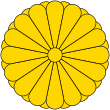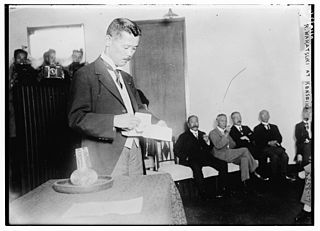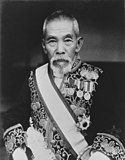Political parties appeared in Japan after the Meiji Restoration, and gradually increased in importance after the promulgation of the Meiji Constitution and the creation of the Diet of Japan. During the Taishō period, parliamentary democracy based on party politics temporarily succeeded in Japan, but in the 1930s the political parties were eclipsed by the military, and were dissolved in the 1940s during World War II
The General Election Law was a law passed in Taishō period Japan, extending suffrage to all males aged 25 and over. It was proposed by the Kenseitō political party and it was passed by the Diet of Japan on 5 May 1925.

General elections were held in Japan on 20 February 1928, the first after the introduction of universal male suffrage. The ruling Rikken Seiyūkai led by Prime Minister Tanaka Giichi won one more seat than the opposition Rikken Minseitō led by Hamaguchi Osachi, although Rikken Minseitō had received slightly more votes. The hung parliament led to the Tanaka government continuing in office.
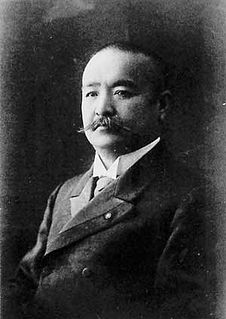
The Rikken-Dōshi Kai was a political party active in the Empire of Japan in the early years of the 20th century. It was also known as simply the Dōshikai.

The Rikken Kokumintō was a minor political party in the Empire of Japan. It was also known as simply the Kokumintō.
General elections were held in Japan on 20 February 1936. Rikken Minseitō emerged as the largest party in the House of Representatives, winning 205 of the 466 seats.
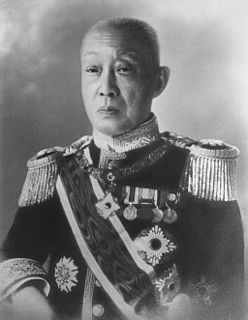
General elections were held in Japan on 1 March 1903. The Rikken Seiyūkai party remained the largest in the House of Representatives, winning 175 of the 376 seats, but lost its majority.

General elections were held in Japan on 15 May 1908. The result was a victory for the Rikken Seiyūkai party, which won 187 of the 379 seats.

General elections were held in Japan on 10 May 1920. The result was a victory for the Rikken Seiyūkai party led by Hara Takashi, which won 278 of the 464 seats.

General elections were held in Japan on 20 April 1917. The Rikken Seiyūkai party led by Hara Takashi emerged as the largest party in the House of Representatives, winning 165 of the 381 seats.
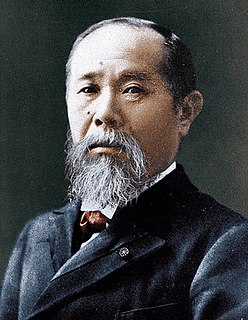
General elections were held in Japan on 10 August 1902. The result was a victory for the Rikken Seiyūkai party, which won 191 of the 376 seats.

General elections were held in Japan on 1 March 1904. The Rikken Seiyūkai party remained the largest in the House of Representatives, winning 133 of the 379 seats.

General elections were held in Japan on 15 May 1912. The result was a victory for the Rikken Seiyūkai party, which won 209 of the 381 seats.

General elections were held in Japan on 25 March 1915. The Rikken Dōshikai party emerged as the largest party in the House of Representatives, winning 153 of the 381 seats.
The Kakushin Club was a political party in Japan.
The Boshin Club was a political party in Japan.
The Chūsei Club was a pro-business political party in Japan.
Events in the year 1924 in Japan. It corresponds to Taishō 13 (大正13年) in the Japanese calendar.
